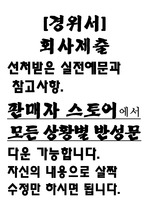중추신경계 손상 환자의 운동장애 고찰(근육긴장도 변화와 강직, 그리고 근력강화)
두레까치
다운로드
장바구니
소개글
"중추신경계 손상 환자의 운동장애 고찰(근육긴장도 변화와 강직, 그리고 근력강화)"에 대한 내용입니다.목차
Ⅰ. 서론Ⅱ. 본론
1.근육긴장도와 강직
2.움직임 향상을 위한 강직 억제
3.근력 생성
4.근력 약화와 관련된 생리적 변화
5.중재. 근력강화와 움직임 재교육
Ⅲ. 결론
Ⅳ. 참고문헌
본문내용
Ⅰ. 서론중추신경계 손상 환자에게 적용하는 운동치료의 기본 원리는 과도한 근육 긴장도를 감소시키고, 근육 활성을 촉진하여 기능적 움직임 수행능력을 향상시키는 것이다(Humrnelsheim, 1999). 중추신경계 손상 환자에서 정상적인 움직임을 어렵게 하는 원인에는 근육 긴장도 변화와 근력 약화가 있다. 근육 긴장도의 문제는 긴장도를 정상으로 회복시킴으로써 운동장애를 개선하고, 근육 약화의 문제는 근력강화운동으로 운동장애를 개선시킬 수 있다. 현재 이러한 기본 원리는 여러 치료 접근법에서 대부분 받아들여지고 있지만, 2000년대 이전 신경계 운동치료는 강직에 대한 이해와 강직을 조절하는 접근 방법을 강조하는 것이 일반적이었다.
하지만 1990년대부터 근력강화운동에 대한 중요성이 강조되었rh, 중추신경계 손상 환자를 중재함에 있어서 운동장애의 근본 원인이 과긴장도(hypertone) 형태의 강직(spasticity) 때문인지 아니면 근육약화(muscu-lar weakness) 때문인지가 주요 쟁점이 되었다. 그러나 현재는 중추신경계 손상 환자의 기능적 움직임 향상을 위해 환자의 준비를 강조하는 것과 함께 과도한 근긴장도나 비정상적인 반사활동을 억제하는 중재보다는 기능적인 움직임 수행을 하는 동안 근력과 지구력을 향상시키고, 근육활동을 조절할 수 있도록 학습시키는 것으로 바뀌었다.
따라서 본 종설은 신경계 운동치료에서 근력과 강직에 대한 변화된 관점을 정리하여 이해를 돕고자 한다. 본문은 강직의 최신 지견과 물리치료와의 관련성(김종만, 최흥식, 1995), 편부전마비 환자에서의 근육약화에 대한 생리학적 고찰(김종만, 김택훈, 1996), 강직성 편마비 환자에서의 운동장애는 강직 때문인가? 근육약화 때문인가?(김종만, 안덕현, 2002)를 요약 정리한 것이다.
Ⅱ. 본론
1.근육긴장도와 강직
긴장도(tone)는 수동 신장이나 늘림에 대한 근육의 저항을 의미한다(O'Sullivan과 Schmitz, 2001). 정상적인 근육긴장도는 중력을 이길수 있을 만큼 높아야 하지만, 기능적인 움직임을 허용할 수 있을 만큼 낮아야 한다. 그러나 중추신경계 손상 환자는 중력을 이길 수 없는 저긴장(hypotonicity) 상태에 있거나, 기능적 움직임이 불가능한 과긴장(hypertonicity) 상태를 경험하게 된다.
참고 자료
Ada L, Canning C. Anticipating and avoiding muscle shortening. In: Ada L, Canning C(eds) Key Issues in Neurological Physiotherapy. Butterworth Heinemann, 1990:219-236.Andrew K, Brocklehurst GC, Richard B, et al. The rate of recovery from stroke and its measurement. International Rehab Med 1981;31:155-161.
Ansari NN, Naghdi S, Arab TK, Jalaie S. The interrater and intrarater reliability of the Modified Ashworth Scale in the assessment of muscle spasticity: limb and muscle group effect. Neuro Rehabilitation. 2008;23(3):231-7.
Artieda J, Quesada P, Obeso JA: Reciprocal inhibition between forearm muscles in spastic hemiplegia. Neurology. 1991; 1:286-289.
ASHWORTH B. PRELIMINARY TRIAL OF CARISOPRODOL IN MULTIPLE SCLEROSIS. Practitioner. 1964 Apr;192:540-2.
Axelson HW, Hagbarth KE. Human motor control consequences of thixotropic changes in muscular short-range stiffness. J Physiology. 2001;535: 279-288.
Berger W, Horstmann G, Dietz V. Tension development and muscle activation in the leg during gait in spastic hemiparesis: independence of muscle hypertonia and exaggerated stretch reflexes. Journal of Neurology, Neurosurgery and Psychiatry. 1984;47:1029一1033.
Bobath B. Adult Hemiplegia: Evaluation and Treatment. 3 rd ed. London, Heinemann, 1990.
Bobath B. Adult Hemiplegia: Evaluation and Treatment. London, William Heinemann, 1978.
Bohannon RW, Larkin PA, Smith MB, et al. Realationship between static muscle strength deficits and spasticity in stroke patients with hemiparesis. Phys Ther. 1987;67:1068-1071.
Bohannon RW, Warren ME, Cogman KA. Motor variables correlated with hand to mouth maneuver in stroke patients. Arch Phys Med Rehabil 1991;72:682.
Bohannon RW. Relationship between active range of motion deficits and · muscle length and tone at the elbow in patients with hemiparesis. Clinical Rehabilitation. 1991;5:219-224.
Bohannon RW. Strength of lower limb related to gait velocity and cadence in stroke patients. Physiotherapy Canada 1986;38:204一206.
Brooks VB. The Neural Basis of Motor Control. New York, Oxford University Press, 1986.
Brunnstrom S. Movement Therapy in Hemiplegia. _ New York, Harper and Row, 1970.
Burke D. Spasticity as an adaptation to pyramidal tract injury. In: Waxman SG, Advances in Neurology, 47: Functional Recovery in Neurological Disease, New York, Raven press, 1988:401-423.
Burke RE. Motor Units: Anatomy, Physiology and Functional Organization. In Brooks VB(Ed), Handbook of Physiology: The nervous system: Vol. 2. Motor control(p 345-42'2). Bethesda: American Physiological Society, 1981.
Butefisch C, Hummelsheim H, Denzler P, et al. .Repetitive training of isolated movements improves the .outcome of motor rehabilitation of the centrally paretic hand. ] Neurol Sci. 1995;130: 59-68.
Campman, C.E., Wiesendanger, M. The physiological and anatomical basis of spasticity : a review. Physiotherapy Canada 34: 125-136, 1982a
Carey JR, Burghardt TP. Movement dysfunction following central nervous system lesions: a problem of neurologic or muscular impairment. Phys Ther. 1993; 73:538-549.
Carey JR, Burghardt TP. Movement dysfunction following central nervous system lesions: A problem of neurologic or muscular impairment. Phys Ther. 1993;73:538-547.
Carr JH, Shepherd RB. Neurological Rehabilitation: Qptimizing mortor performance. Butterworth-Heinemann, 1998.
Cordo PJ, Nashner LM. Properties of postural adjustments associated with rapid arm movements. Joum;:tl of Neurophysiology. 1982;47:287-302.
Dietz V, Keltelsen UP, Berger W, et al. Motor unit involvement in spastic paresis: Relationship between leg muscle activation and histochemistry. J Neurol scien 1986;75:89-103.
Dietz V, Quintern J, Berger W. Electrophysiological studies of gait in spasticity and rigidity: Evidence that altered mechanical properties of muscle contribute to hypertonia. Brain 1981;104:431-449.
Dietz V. Spasticity: exaggerated reflexes or movementdisorder? In: Forssberg H, Hirschfeld H(eds) On Movement Disorders in Children. Karger, Basel, 1992: 225-233.
Edstrom L, Grimby L, Hannerz J. Correlation between recruitment order of motor units and muscle atrophy pattern in upper motoneurone lesion: Significance of spasticity. Experimenta 1':J73;29:560-561.
Edstrom L, Grimby L, Hannerz J. Correlation between recruitment order of motor units and muscle atrophy pattern in upper motoneurone lesion: Significance of spasticity. Experimenta 1973;29:560-561
Edstrom L. Selective changes in the sizes of red and white muscle fibers in upper motor lesions and Parkinsonism. J Neurol Scien 1970;11:537-550.
Everts EW, Wise SP, Bousfield D. The Motor System in Neurobiology. Amsterdam, Elsevier, 1985.
Fellows SJ, Kaus C, Thilmann AF. V oluntary movement at the elbow in spastic hemiparesis. Ann Neurol. 1994;36:397-407.
Finch L, Barbeau H. Influences of partial weight―bearing on normal human gait: The development of a gait retraining strategy. Canadian J Neurological Science. 1985;12:183.
Goldcamp O. Electromyograpy and nerve conduction studies in 116 patients with hemiplegia. Arch of Phys Med. 1967;48:59-63
Gowland C, DeBruin H, Basmajian JV, et al. Agonist and antagonist activity during voluntary upper limb movement in patients with stroke. Phys Ther 1992; 72(9):624-633.
Gowland C, deBruin H, Basmajian JV, et al. Agonist and antagonist activity during voluntary upper limb movement in patients with stroke. Phys Ther. 1992;72:624-633.
Hagbarth KE. Evaluation of and methods to change muscle tone. Scand J Rehab Med. 1994;30(Sup):19 32.
Hesse S, Bertelt C, Jahbke MT, et al. Treadmill training with partial body weight support compared with physiotherapy in non-ambulatory hemiparetic patients. Stroke. 1995;26:976-981.
Hufschmidt A, Mauritz KH. Chronic transformation of muscle in spasticity: A peripheral contribution to increased tone. J Neural Neurosurg Psychiatry. 1985;48:676-85.
Hufschrnidt K, Mauritz KM. Chronic transformation of muscle in spasticity: a peripheral contribution to increased tone. J of Neur, Neurosurg and Psych. 198.5; 48:676一685.
Hummelsheim H, Amberg S, Mauritz KH. The influence of EMG-initia d electrical muscle stimulation on motor recovery of the ceri.trally paretic hand. Europ J Neurol. 1996;3:245-254.
Hummelsheim H. Rationales for improving motor function. Curr Opin Neurol. 1999;12(6):697-701.
intensive task-oriented gait training program in a series of patients with acute cebrovascular accidents. Physical Therapy. 1992;72:781-793.
Katz RT, Rymer WZ. Spastic hypertonia: mechanisms and measurement. Arch of Phys Med and Rehabil. 1989;70:144-155.
Katz RT, Rymer WZ. Spastic hypertonia: Mechanisms and measurement. Arch Phys Med Rehabil. 1989;70:144-155.
Kellermayer MSZ, Smith SB, Granzier HL, et al. Folding-unfolding transitions in single titin molecules characterized with laser tweezers. Science. 1앞)7;Z'76:1112-1116.
Kim Jong-man, Ahn Duck-hyun, Movement Dysfunction in Spastic Hemiparesis: A Problem of Spasticity or Muscular Weakness? KAUTPT Vol. 9 No. 3, 2002.
Kim Jong-man, Choi Houng-sik, Research Findings and Implications for Physical Therapy of Spasticity. KAUTPT Vol. 2 No. 2, 1995.
Kim Jong-man, Kim Tack-hoon, Physiological Review of Weakness in Patients with Hemipresis. KAUTPT Vol. 3 No. 2, 1996.
Knutsson E, Martensson A Dynamic motor capacity in spastic paresis and its relation to prime mover dysfunction, spastic reflexes and antagonist co-contraction. Scand J Rehab Med 1980;12:93-106.
Kuypers HGJM. Anatomy of Descending Pathways. In Brooks VB(Ed), Handbook of Physiology: The nervous system: Vol. 2. Motor control(p 597-666). Bethesda: American Physiological Society, 1981.
Lance JW. Symposium synosis. In: Feldman RGi Young RR, Koella WP (Eds). Spasticity: Disordered motor control. Chicago, Year Book Medical Pub., 1980.
Landau WM. Parables of palsy, pills and PT pedagogy: a spastic dialectic. Neurology. 1988;38:1496-1499.
Latash ML, Penn RD, Corcos DM, et al. Short-term effects of intrathecal baclofen in spasticity. Experimental Neurology. 1989;103:165-172.
Lovely RG, Gregor RJ, Edgerton VR. Effects
Marshell LF. Current head injury reserch. Current Option in Neurology and Neurosurgery. 1990;3:4-9
Mayer NH. Clinicophysiologic concepts of spasticity and motor dysfunction in adults with an upper motoneuron lesion. Muscle & Nerve. 1997;6(Suppl): Sl-S13.
McComas AJ, Sica REP, Upton ARM, et al. Funtional changes in motorneurones of hemiparetic patients. Journal of Neurology, Neorosugery and Psychiatry. 1973;36:183-193
Mclellan DL. Cocontraction and stretch reflexes in spasticity during treatment with baclofen. J Neurol Neurosurg Psych 1977;40:30-38.
Miller GJT, Light KE. Strength training in spastic hemiparesis: Should it be avoided? Neuro Rehabilitation. 1997;9: 17-28.
Montgomery PC. Neurodevelopmental treatment and sensory intergrative therapy. In: Proceedings of the 11 Step Conference, Contemporary Management of Motor Control Problems. 1991;135-142.
O'Dwyer NJ, Ada L, Neilson PD. Spasticity and muscle contracture following stroke. Brain. 1996;119:1737-1749.
O'Sullivan SB, Schmitz TJ. Physical Rehabilitation: Assessment and treatment. 4th ed., FA Davis Co. 2001.
O’Sullivan SB, Schmitz TJ, Physical Rehabilitation: Assessment and treatment. 4th ed., F A Davis Co. 2001.
Rack PMH, Westbury DR. The effect of length and stimulus rate on tension in the isometric cat muscle. J Neurophysiol 1969;204:443-460.
Richards CL, Malouin F, Dumas F, et al. New rehabilitation strategies for the treatment of spastic gait disorders. In: Paltra AE(ed) Adaptability of Human Gait. New York, Elsevier, 1991;387-411.
Rodosky MW, Andriacchi TP, Andersson GB. The influence of chair height on· lower limb mechanics during rising. Journal of Orthopeadic Research. 1989;286:496-498.
Rosenfalck A, Andreassen S. Impaired regulation of force and firing pattern of single motor units in patients with spasticity. J Neurol Neurosurg Psych 1980;43:907-916.
Scelsi R, Lotta S, Lommi G, et al. Hemiplegic atrophy: Morphological findings in the anterior tibial muscles of patients with cerebrovascular accident. Acta Neuropathologica 1984;4:246-248
Sharmann SA, Norton BJ. The relationship of voluntary movement to spasticity in the upper motor neuron syndrome. Annals of Neurology. 1977;2:460-465.
Sharp SA, Brouwer BJ, Isokinetic strength training of the hemiparetic knee: Effects on function and spasticity. Arch Phys Med Rehabil. 1997;78: 1231-1236.
Shepherd RB, Carr JH. Anemergent or dynamical systems view of movement dysfunction. Australian Journal of Physiotherapy. 1991;37:4-5.
Tang A, Rymer WZ. Abnormal force-EMG relations in paretic limbs of hemiparetic human subjects. J Neurol Neurosurgery Psychiat. 1981;44: 690-698.
Taub E. Somatosensory deafferentation research with monkeys: Implications for rehabilitation medicine. In: Ince LP(ed) Behavioural Psychology in Rehabilitation Medicine: Clinical applications. Baltimore, Williams and Wilkins, 1980:168-196.
Teixeira-Salmela LF, Olney S], Nadeau S, et a1. Muscle strengthening and physical conditioning to reduce impairment and disability in chronic stroke survivors. Arch Phys Med Rehabil. 1999;00:1211-1218.
Tskhovrebova L, Trinick J, Sleep JA, et al. Elasticity and unfolding of single molecules of the giant muscle protein titin. Nature. 1997;387:308-312.
van der Weel FR, van der Meer,ALH, Lee DN. Effect of task on movement control in cerebral palsy: Implications for assessment and therapy. Developmental Medicine and Child Neurology. 1991; 33:419-426.
Voss DE, Ionita MK, Myers BJ. Proprioceptive Neuromuscular Facilitation: Pattems and techniques. 3td ed. Harper & Row Pub. 1985.
Weiss A, Suzuki T, Bean J, et al. High intensity strength training improves strength and functional performance after stroke. Am J Phys Med Rehabil. 2000;79:369-376.
Wilson DJ, Baker LL, Craddock JA. Functional test for the hemiparetic upper extremity. Am J Occup Ther 1984;38:159.
Witzmann FA, Kim DH, Fitts RH. Hindlimb immobilization: length-tension and contractile properties of skeletal muscle. J Appl Physiol Respir Environ Exerc Physiol. 1982 Aug;53(2):335-45.
Young JL, Mayer RF. Physiological alterations of motor units on hemiplegia. J Neurol Scien 1982;54:401-412


























